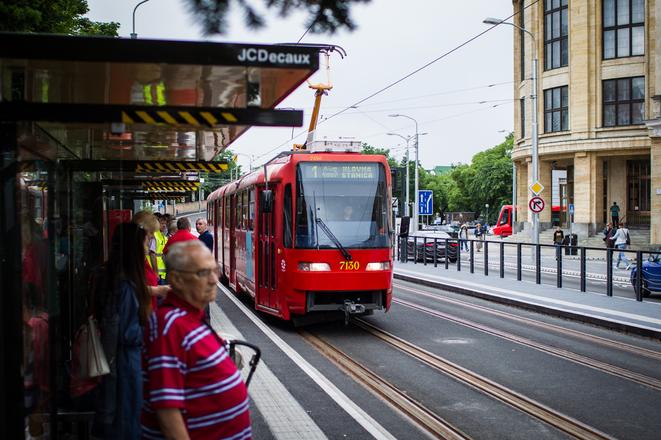The upcoming week will be full of special discounts and campaigns to promote alternative transport.
Under the “Zero-emission mobility for all” theme, European Mobility Week kicked off across Slovakia on September 16 and will last until September 22.
The theme reflects the ambitious targets of a carbon-neutral continent by 2050, President of the European Commission Ursula von der Leyen stressed, and aims to highlight the importance of accessibility to zero-emission transport and promote an inclusive framework involving everyone. It also encourages people and local authorities to take steps to achieve the long-term goal of a carbon-neutral continent.
Discounted fares on trains
The campaigns are usually set individually by transport operators in municipalities and regions in Slovakia who present various ways to support alternative transport.
The state-run railway passenger carrier ZSSK will, for example, offer a 50-percent discount on second-class fares and free-of-charge transport for bicycles.
The discounts will be applied to its local trains (labelled Os) and regional fast trains (labelled REX). When purchasing tickets via the internet, it is necessary to fill in the discount field by typing “Európsky týždeň mobility” in.
Passengers with bicycles will be able to transport them without a ticket, but only if there is free capacity.
In addition, many bus operators also offer discounted tickets to their passengers.
What to expect in Bratislava
Passengers in Bratislava should prepare for several novelties, including the repair of bicycles at the cycling doctor and new e-buses. There will also be a competition for a 90-day ticket.
During September 19 and 20, it will be possible to hop on modern electrobuses at the M line, which will commute between 10:30 and 18:00 on the route of SND – SNP Square – Štefánikova – Main Station – Šancová – Račianske mýto – Legionárska – Dostojevského rad – Danube embankment – Mostová – SND.
Children and teenagers will be able to win three 90-day tickets. All they need to do is to take a picture with a trolleybus and a tram on 14 lines at least, either from the interior or exterior. They should then send them to the Dopravný Podnik Bratislava (DPB) public transport company via Messenger or Instagram.
The DPB also prepared a gift for those purchasing a one-year ticket in its shops: a ticket to the museum at Bratislava Castle.
Meanwhile, the operator of the integrated transport system in the Bratislava Region has made it possible to track the current position of the lines in real time online.
There are several novelties for cyclists, too. The Slovnaft Bajk bike-sharing project will reinforce its fleet with 150 new bikes and it will be possible to purchase a yearly ticket for a symbolic price. Every day, the first two people who buy the programme will receive it for €1.20 instead of €29.40.
There will also be a cycling doctor stationed at Primatial Square and at the Dvořákovo Nábrežie embankment on September 21, from 17:00 until 19:00.
Bratislava will introduce planned cycling routes and will count the cyclists in the city.
The current coronavirus pandemic and the respective restricting measures led to the cancelling of the traditional mass cycling ride and the rides of historic trams this year.
President involved, too
As one of the surprises, passengers using public transport with stops at Hodžovo Námestie square in Bratislava can now hear President Zuzana Čaputová announcing the name of the stop.
“I’m glad I could support the idea of more ecological travelling by recording the announcement for the Hodžovo Námestie stops,” she wrote on Facebook.
She also pointed out how certain forms of transport contribute to CO2 emissions production and air pollution.
“It is thus the aim of the Presidential Office to transfer to electromobility and replace special planes with commercial airlines for longer travels,” Čaputová continued. “So we can fulfil our goal to become a carbon-neutral office by 2030.”
Slovaks use cars the most
To travel from one place to another, people in Slovakia use mostly cars. They opt for it in as much as 73.9 percent of cases, according to the Eurostat data on passenger-kilometres for 2018.
The buses came next with more than 16 percent, while travelling via train is slightly higher than 10 percent.
The country still does not belong to record-holders when it comes to passenger-car use. Moreover, compared with other EU countries, its share is the third-highest, after the Czech Republic (73.3 percent) and Hungary (70.6 percent).
The highest share of passenger-kilometres by cars has been reported by Lithuania (90.4 percent) and Portugal (88.4 percent), according to Eva Sadovská, analyst with WOOD & Company.
The situation in Slovakia has changed significantly in the past 25 years, mostly on roads. While passenger cars currently dominate land transport, in 1993, it represented only 46.5 percent of transport. On the other hand, people used to travel by bus more; bus travel represented a 41.4-percent share of total land transport. About 12 percent of people travelled on trains.



 European Mobility Week should encourage people to use alternative means of transport to cars. (source: Sme - Jozef Jakubčo)
European Mobility Week should encourage people to use alternative means of transport to cars. (source: Sme - Jozef Jakubčo)